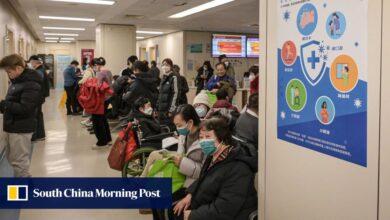As China’s students breathe new life into study tourism, has US gone off their radar?

“Last year, many public schools and parents were still worried, so 2024 is actually the first time since the pandemic that many mainland students have been willing to go abroad for study tours,” said Cai, founder of Ningbo New Way, which runs tailor-made study tours and exchange programmes in Zhejiang province.
Cai noted how his overseas study tour and exchange business has doubled from last year and returned to the pre-pandemic level of 2019.
The market size of China’s study tourism industry was 147.3 billion yuan (US$20.3 billion) in 2023, compared with 152.3 billion yuan in 2019, according to a report issued last year by the Beijing-based consultancy Guanyan Tianxia, which looked at the expected development of China’s study tourism industry through 2030.
And this month, a report by iiMedia Research predicted that the industry’s market size would reach 179.1 billion yuan this year and surpass 300 billion yuan annually by 2028. It also said that two-thirds of surveyed parents were very willing to let their children participate in such tours.
Meanwhile, with the report noting that related posts on Chinese social media have garnered billions of views this year, study tours are clearly in huge demand among mainlanders.
Data shows that, in 2023, there were about 189 million primary and secondary school students and 48 million university students in China.
Many public middle schools in first- and second-tier cities have launched various study tour routes for students, ranging from domestic destinations priced at nearly 10,000 yuan to international destinations priced above 40,000 yuan.
Study tours can help them apply for admission to universities in Asia or compete for jobs at Asian companies in the future
The excursions help give students global exposure, cultural insight, and a taste of independence away from doting parents.
Cai explained how, despite a general decline in family assets and income in China, overseas study tours remain important for a large number of middle-class and affluent families in China.
“Compared with pre-pandemic times, the trend is that more students and parents are interested in Asia, as they are casting more light on the region for their further education and career planning,” he said.
Tours to Japan and Malaysia have become increasingly popular, with some prices ranging from 10,000 to 30,000 yuan, according to Cai.
“Students can interact with peers at local universities and visit local enterprises,” he said. “The students are very interested in the overseas expansion of Chinese companies, and Asia is now where Chinese companies concentrate their investments.
“Study tours can help them apply for admission to universities in Asia or compete for jobs at Asian companies in the future, and a growing number of Chinese parents are also encouraging their children to start engaging with the Southeast Asian market.”
Other industry insiders pointed out that the UK has become the preferred destination for high-end overseas study tours, while the US is seen as a shrinking market.
“The cost and difficulty of obtaining a visa for study tours to the US are becoming very high,” said Cherry Ma, a Sichuan-based immigration and international education consultant. “Apart from high-net-worth families, most Chinese middle-class parents think they cannot afford – and thus become less interested in – those tours to the US.
“The soaring tuition fees at American universities have also deterred many Chinese parents, and the chances of their children staying in the US to work after graduation are diminishing.
“The high rejection rate for visas, and the need to take students to Beijing for visa processing, are also reducing the opportunities for Chinese students to go on study tours to the US.”
Xie Weishi, a parent in the southern city of Guangzhou, said her daughter recently set out on a 15-day study tour to the UK. Stops included several major universities, the British Museum and Westminster Abbey, and the itinerary emphasised British politics, with visits to the Palace of Westminster.
“In the primary and secondary school student market, most parents trust and pay for those overseas study tours, which are recommended and arranged by the public schools their children attend,” Xie said. “As far as I know, almost all these routes are to the UK this summer.
“Even in the most open [Chinese] cities such as Guangzhou or Shanghai, public schools have not launched study tour routes to the US, as far as I know.”
Source link




